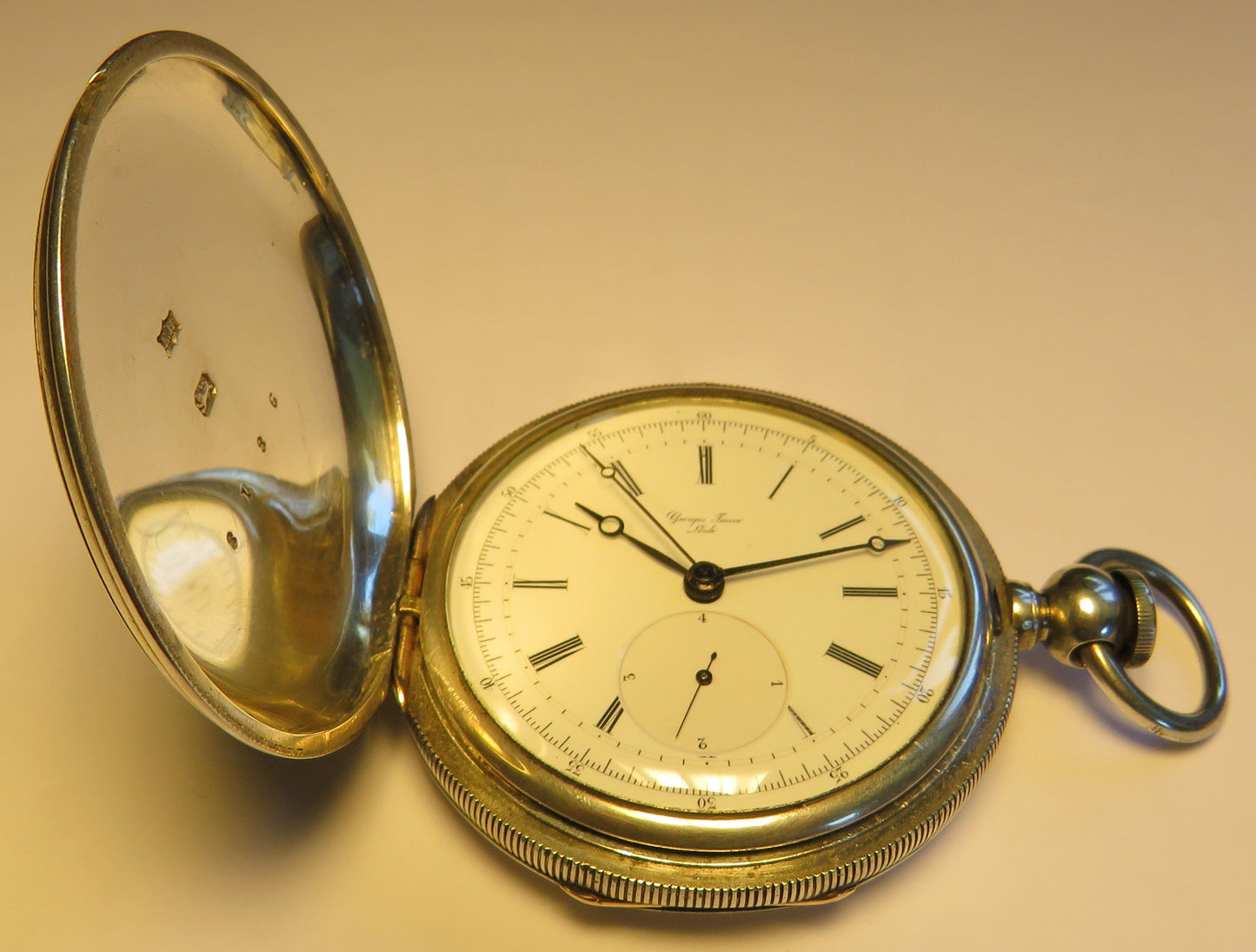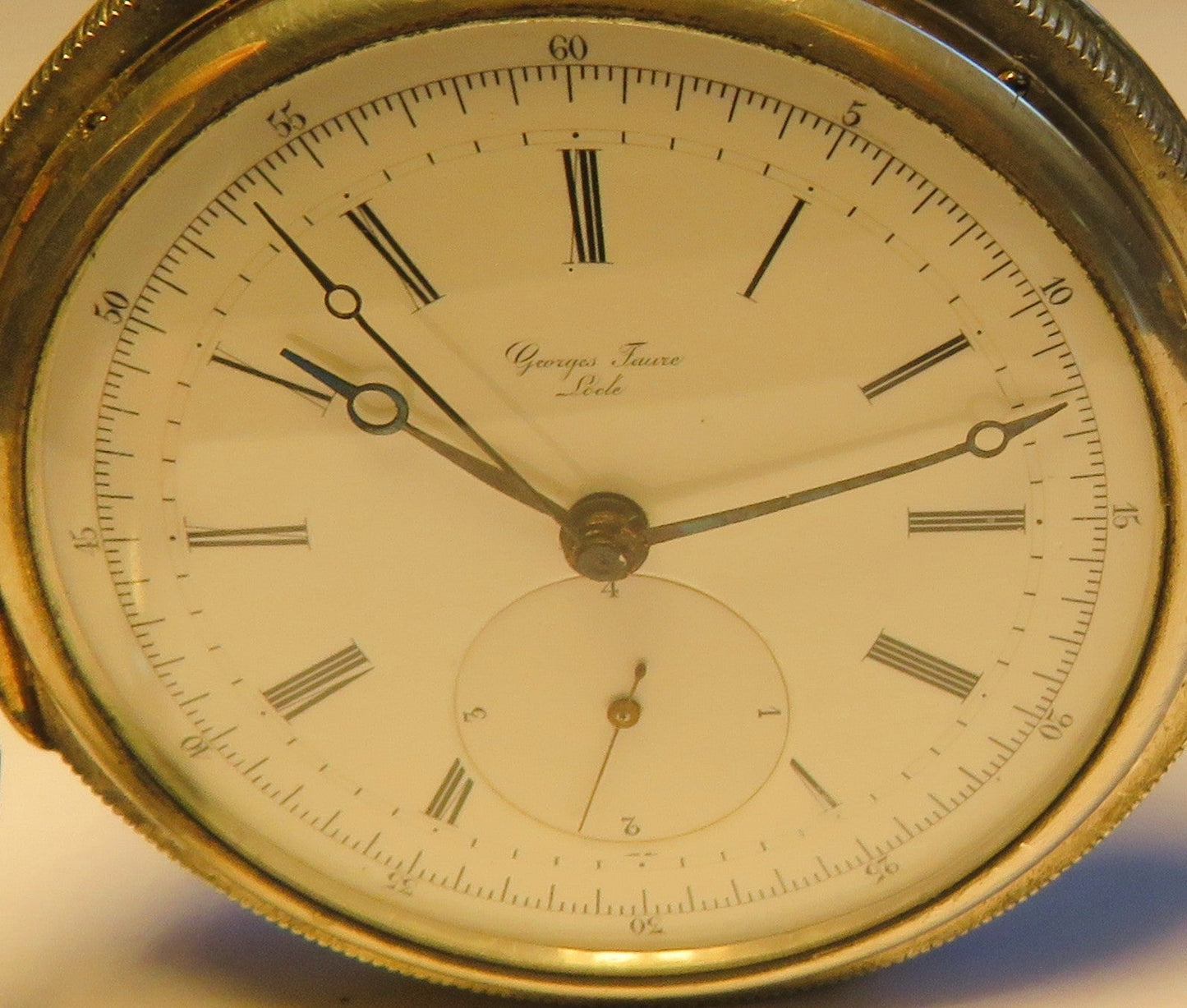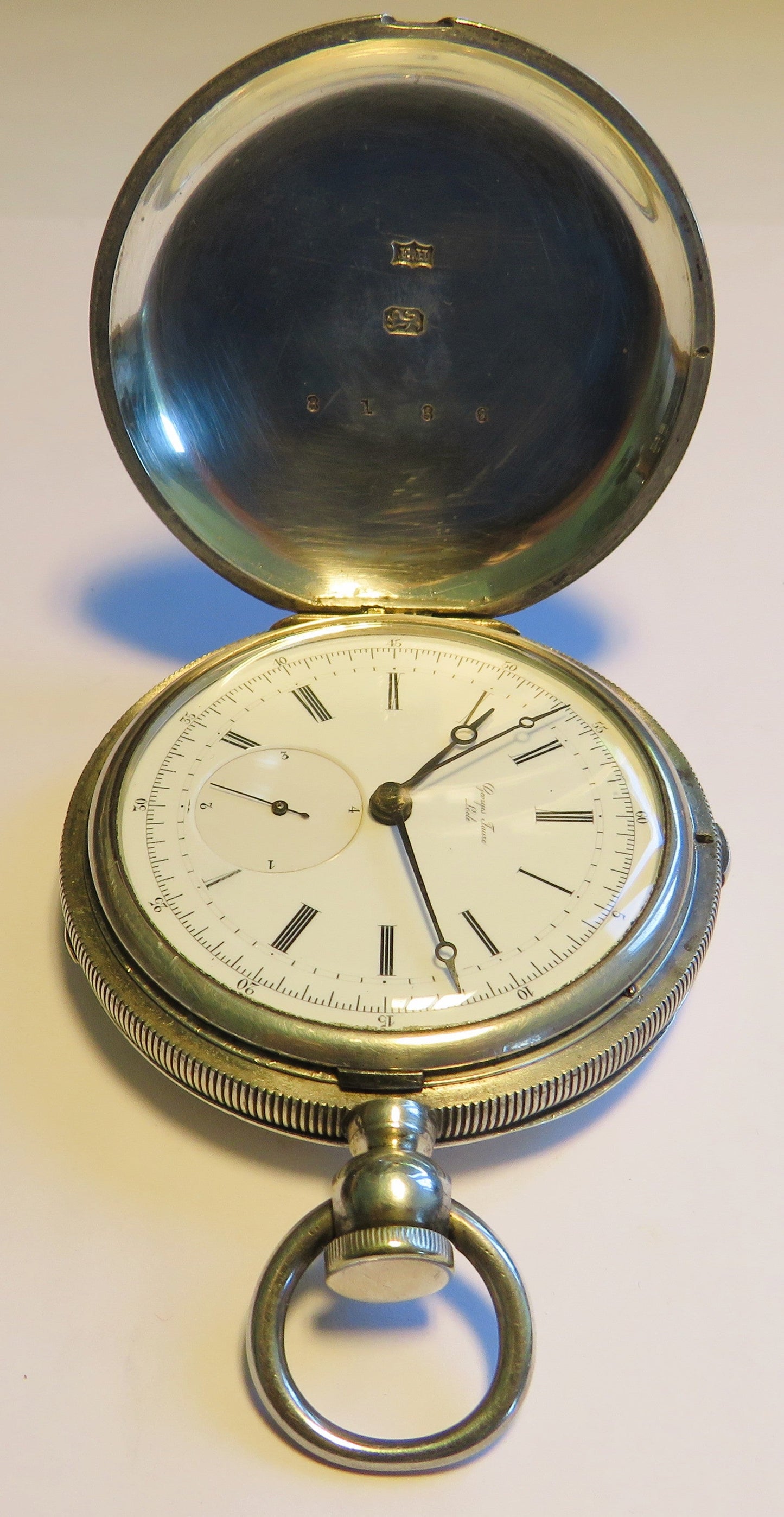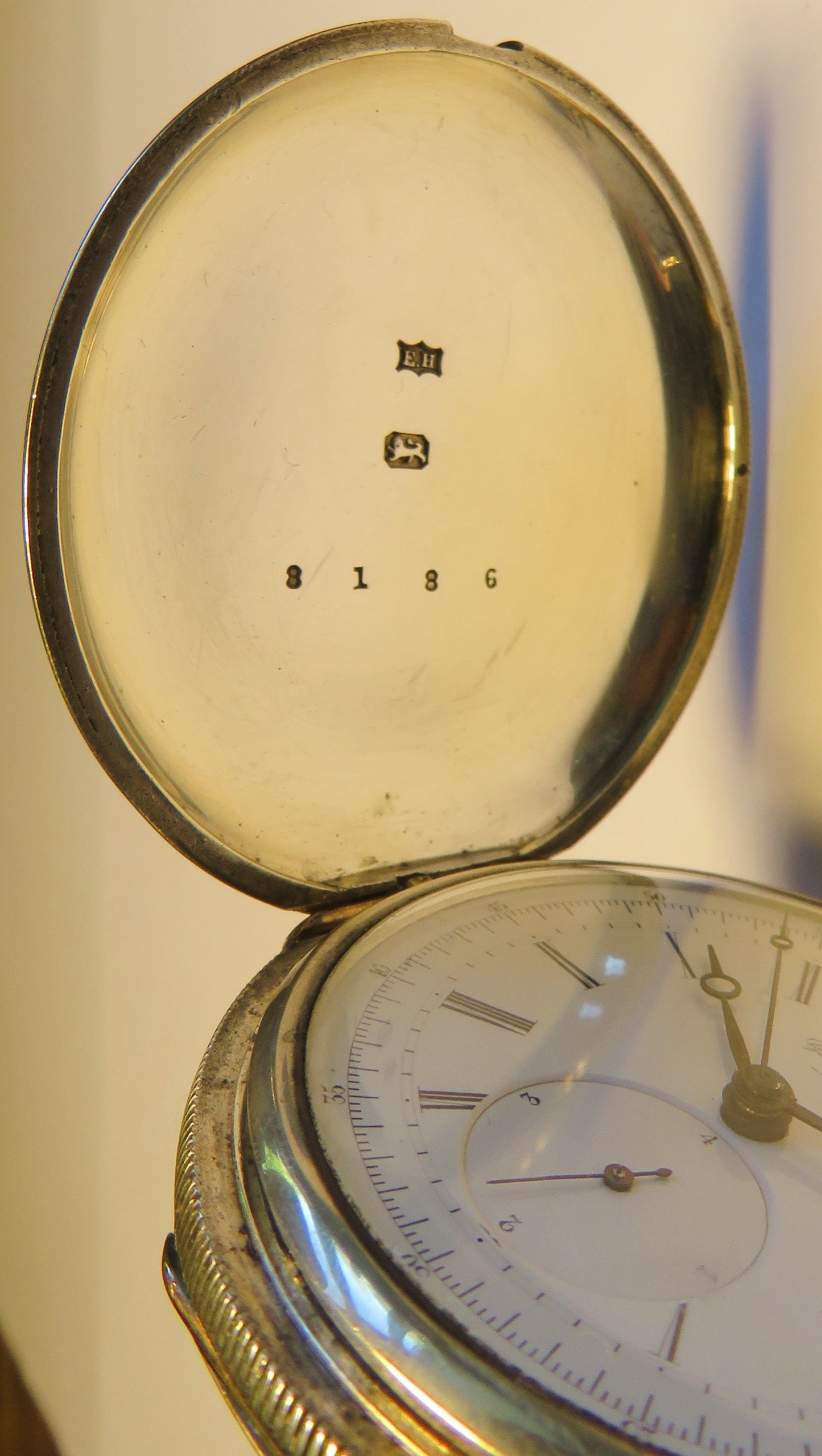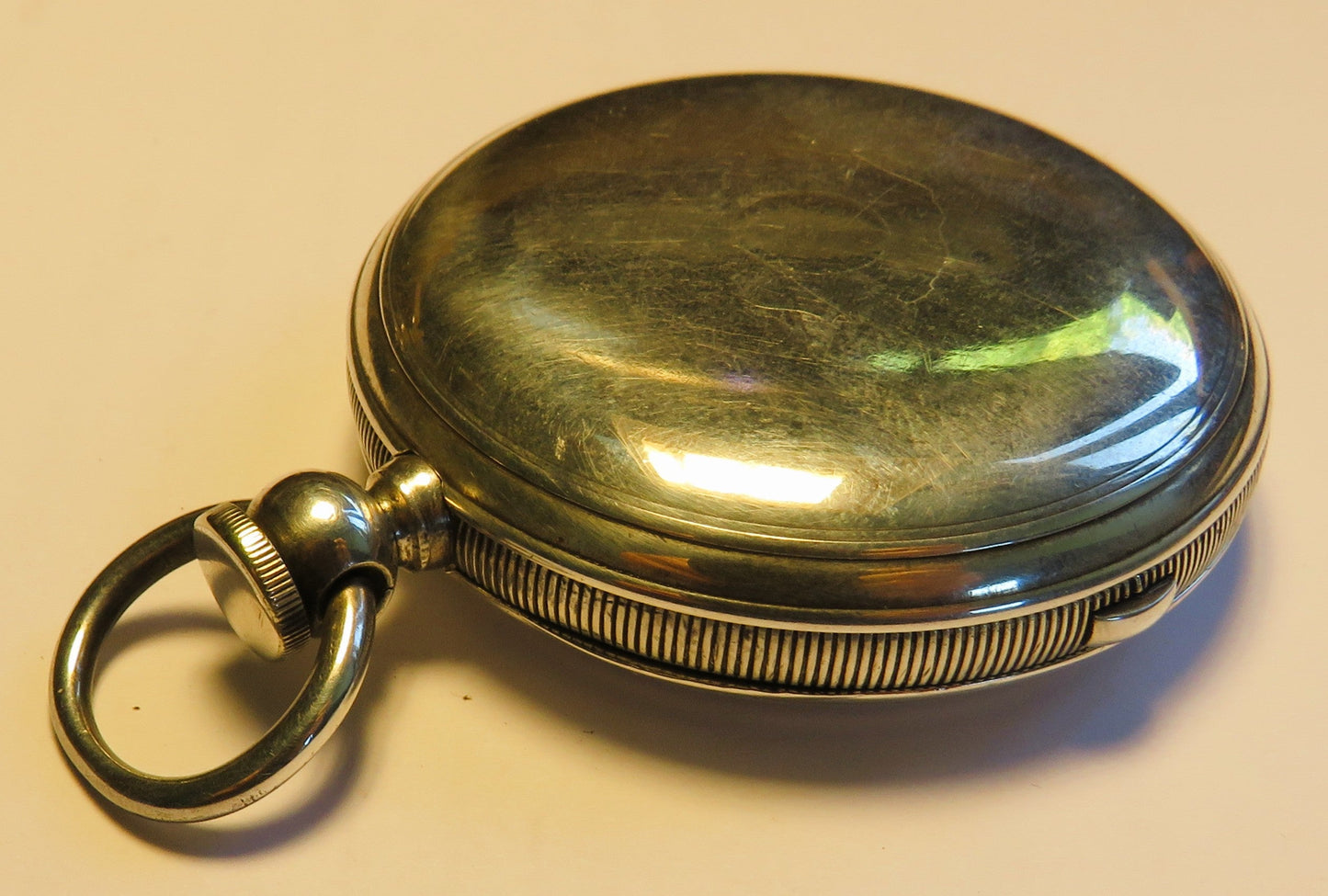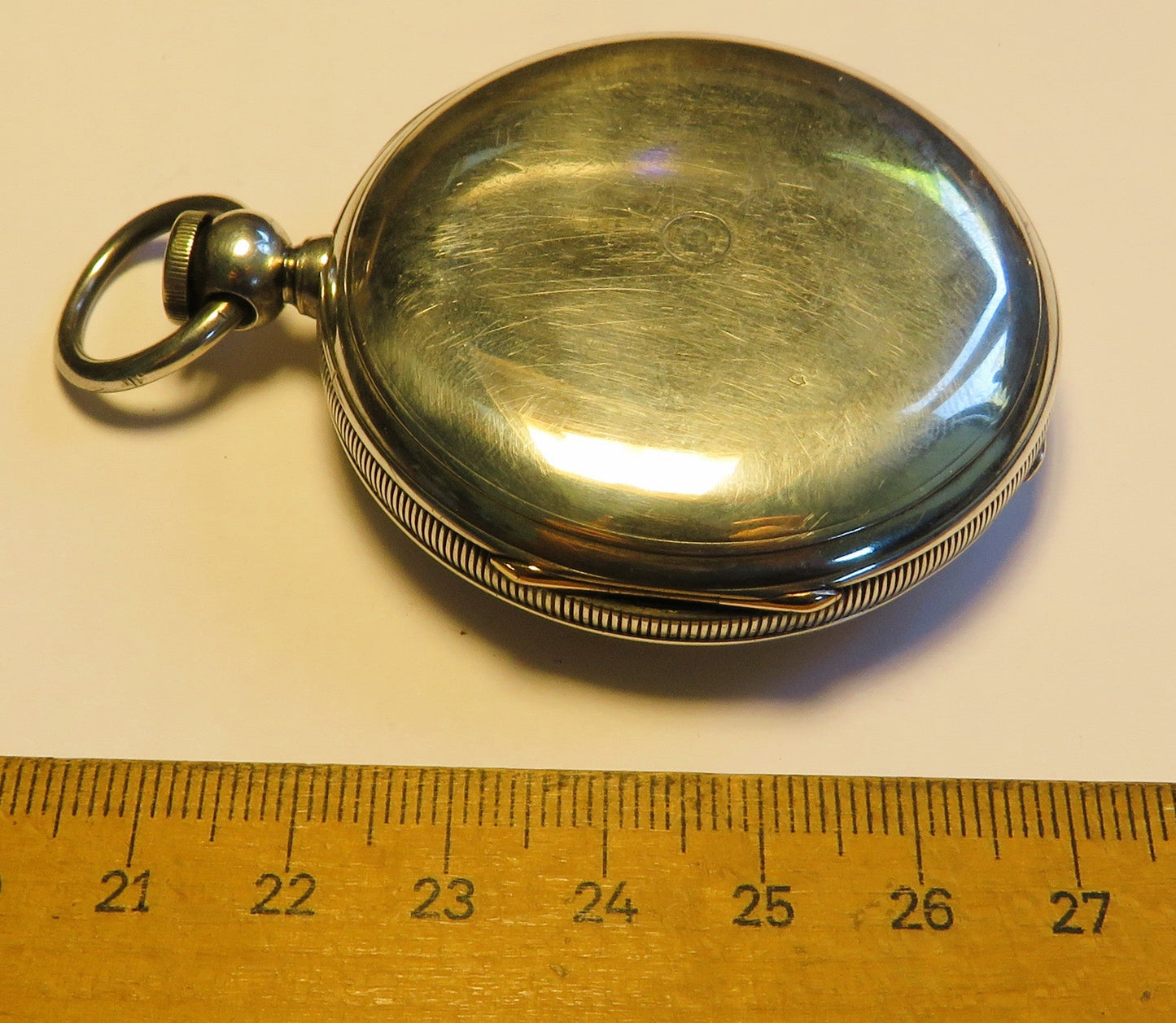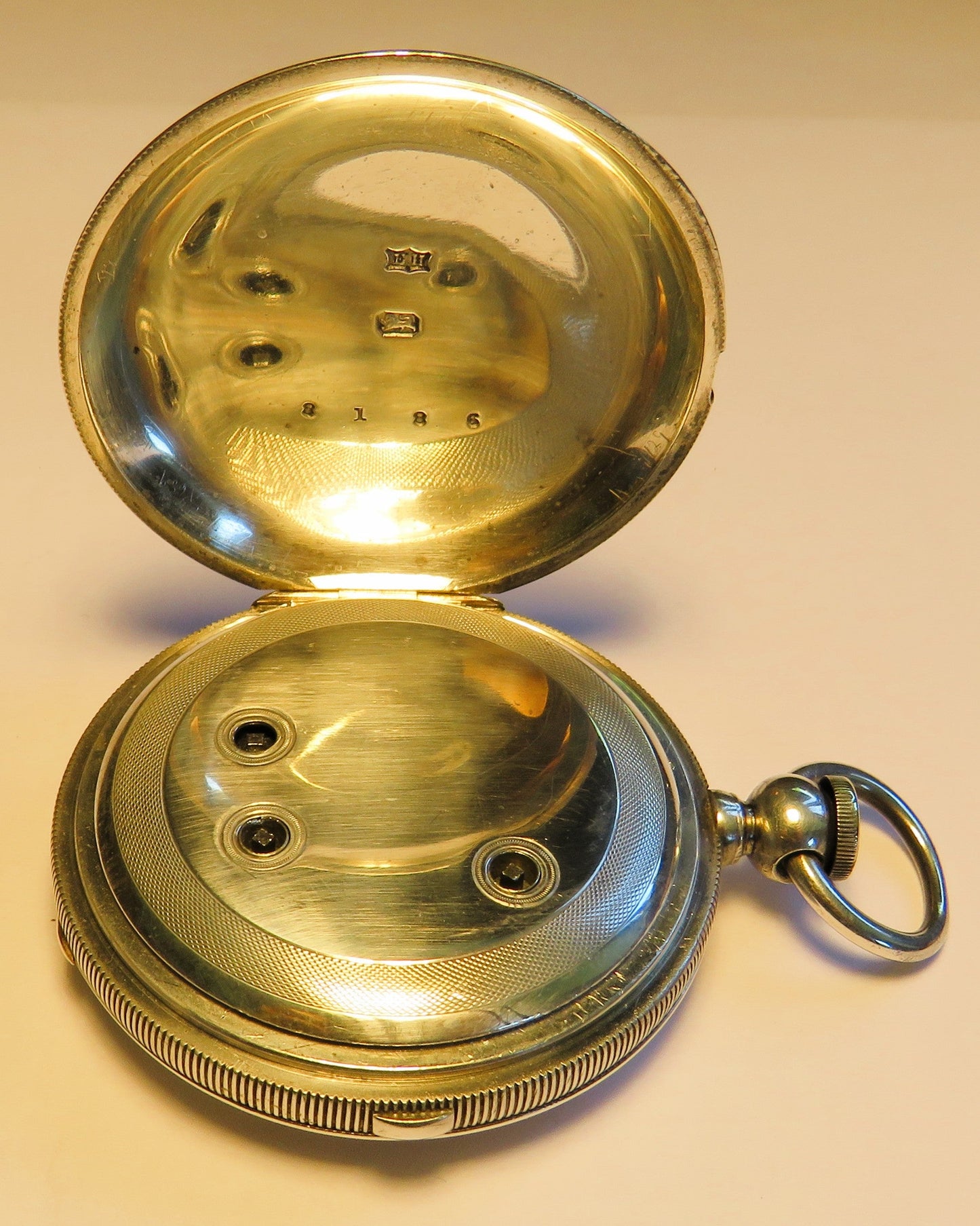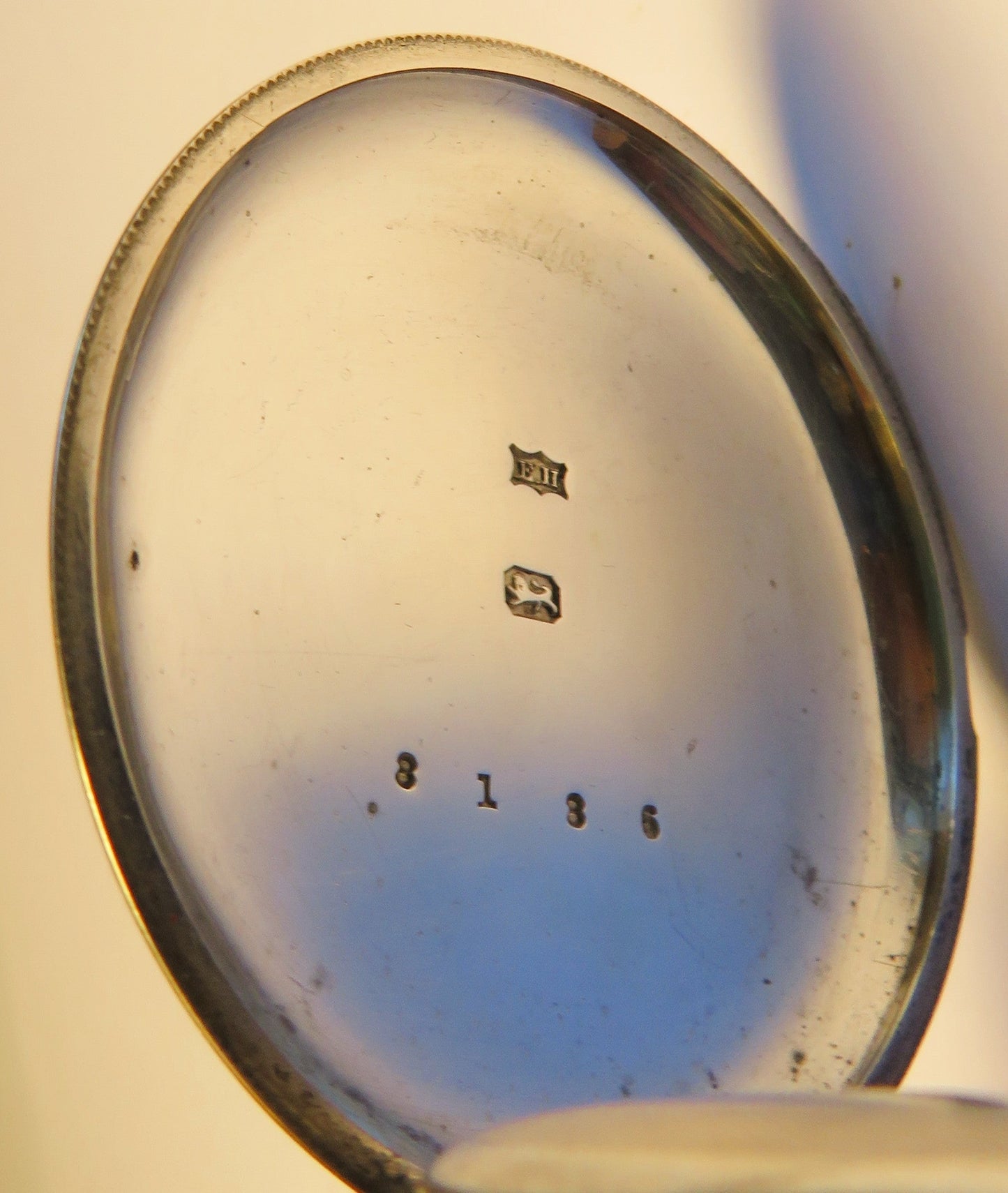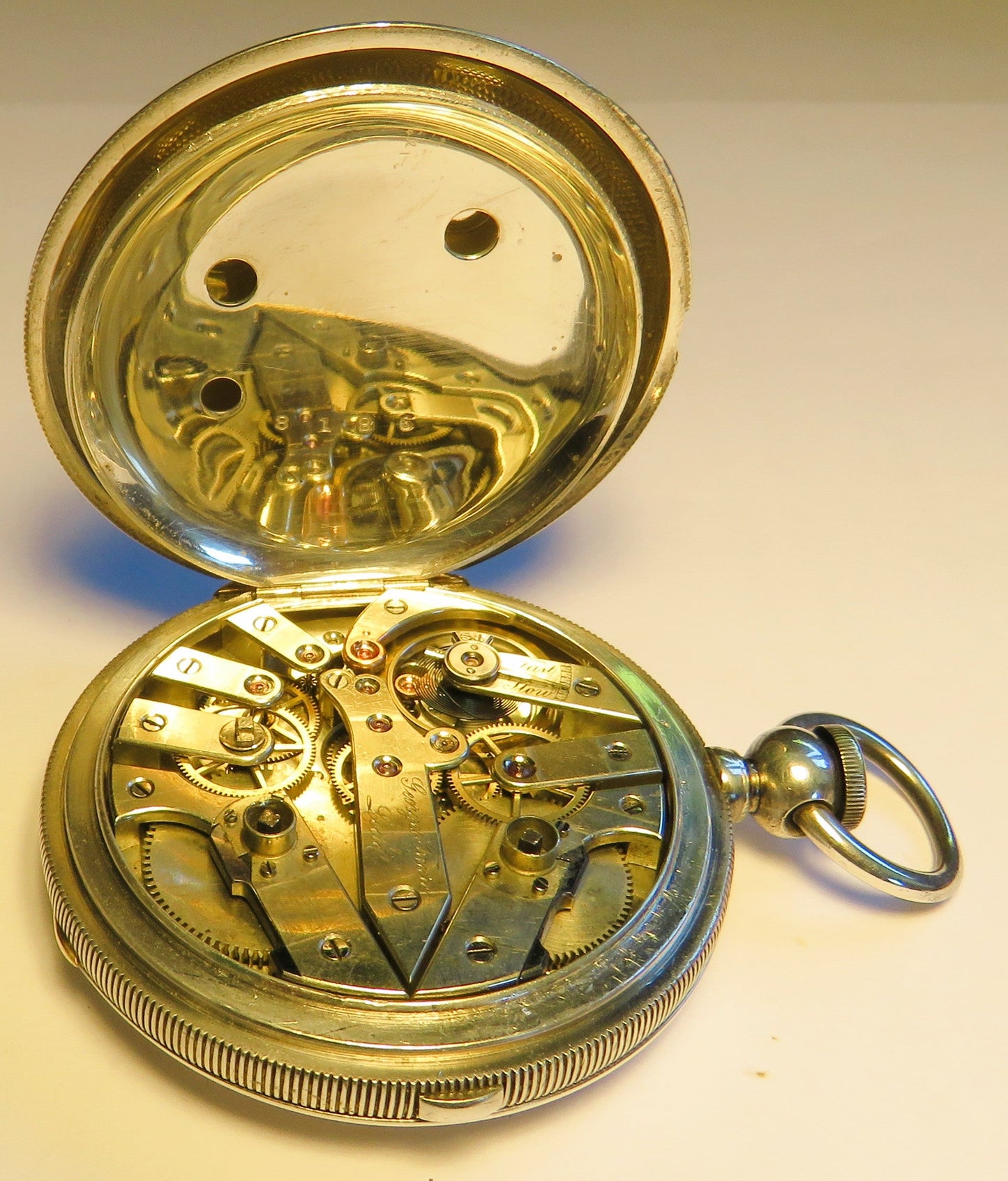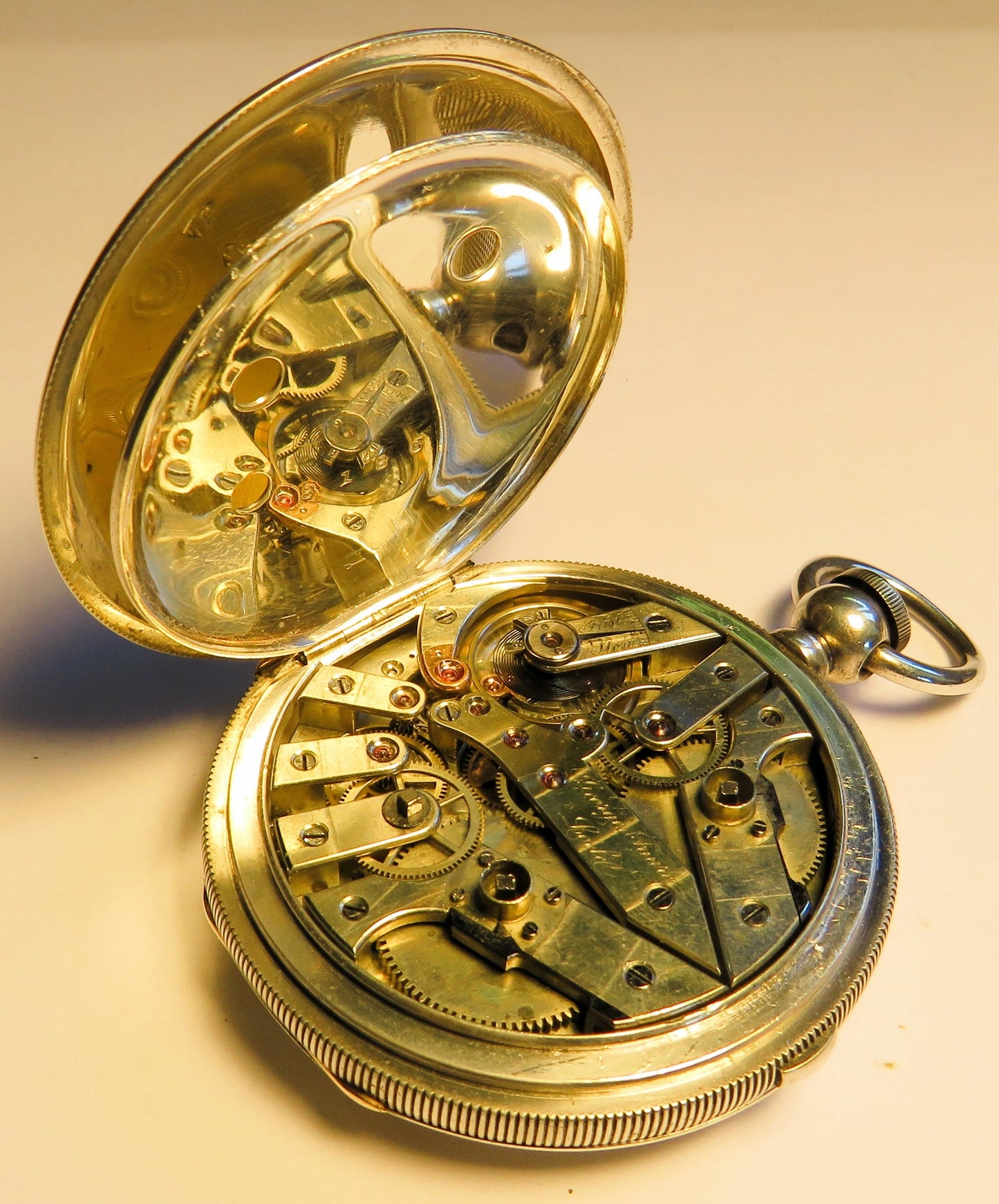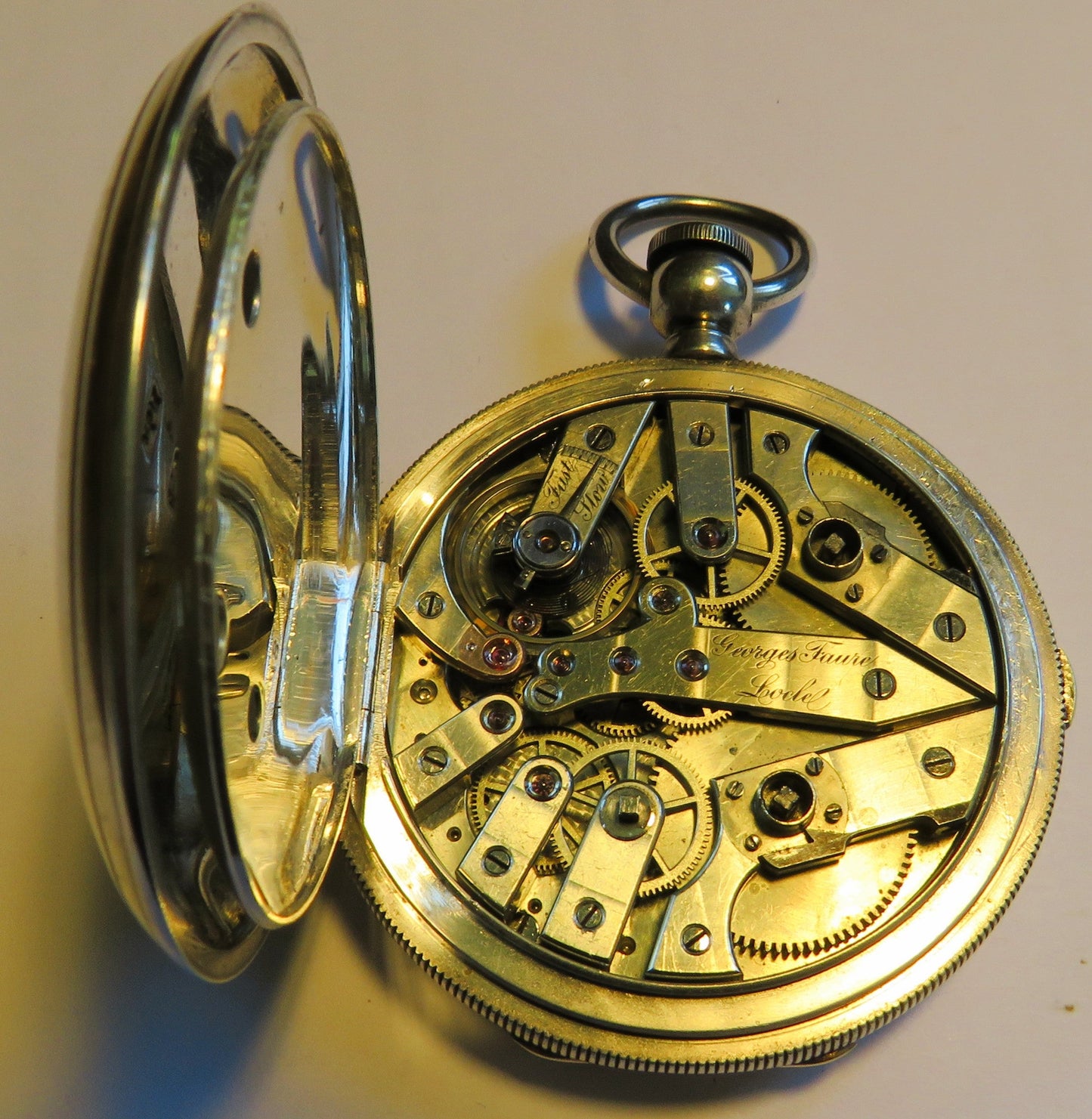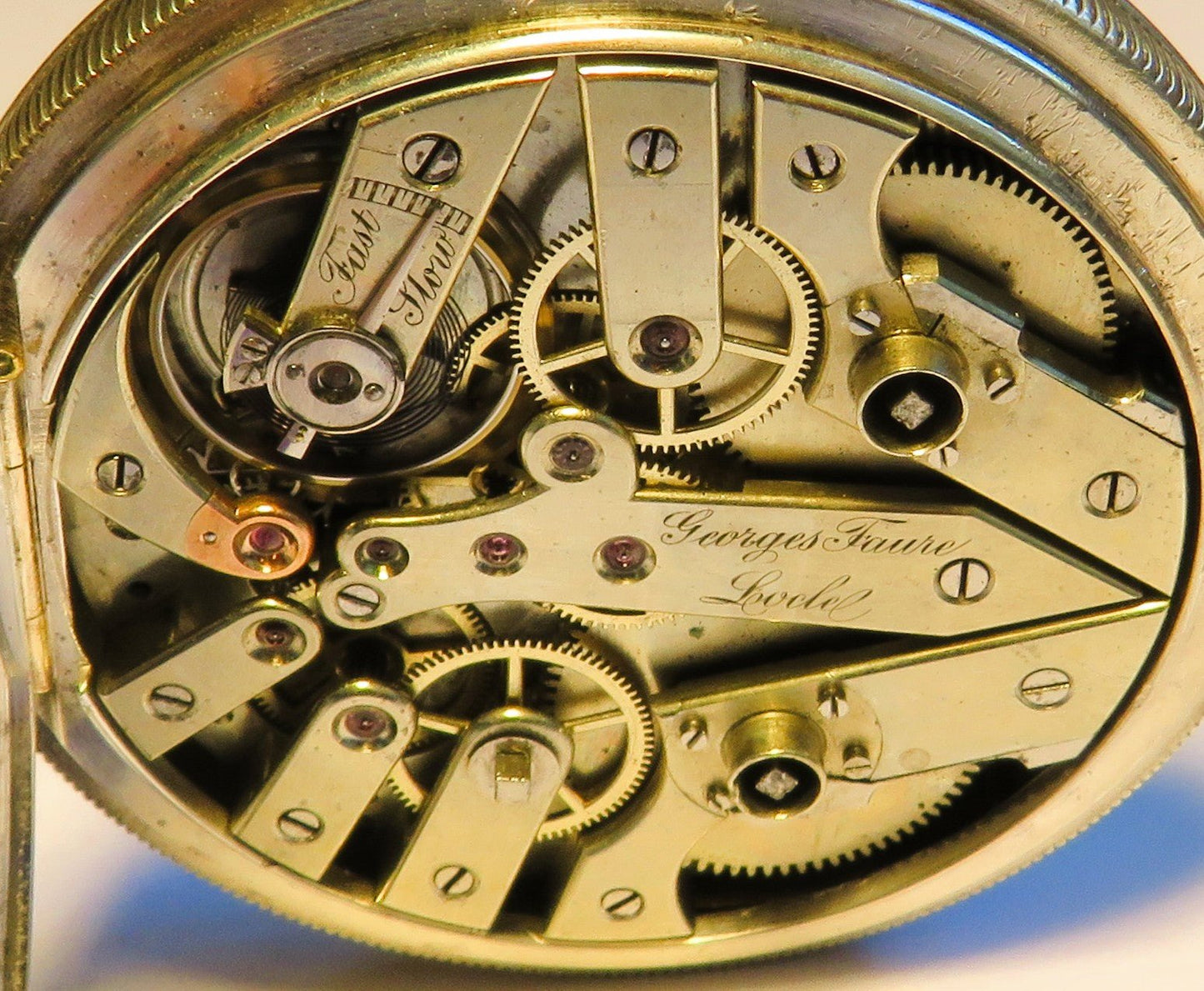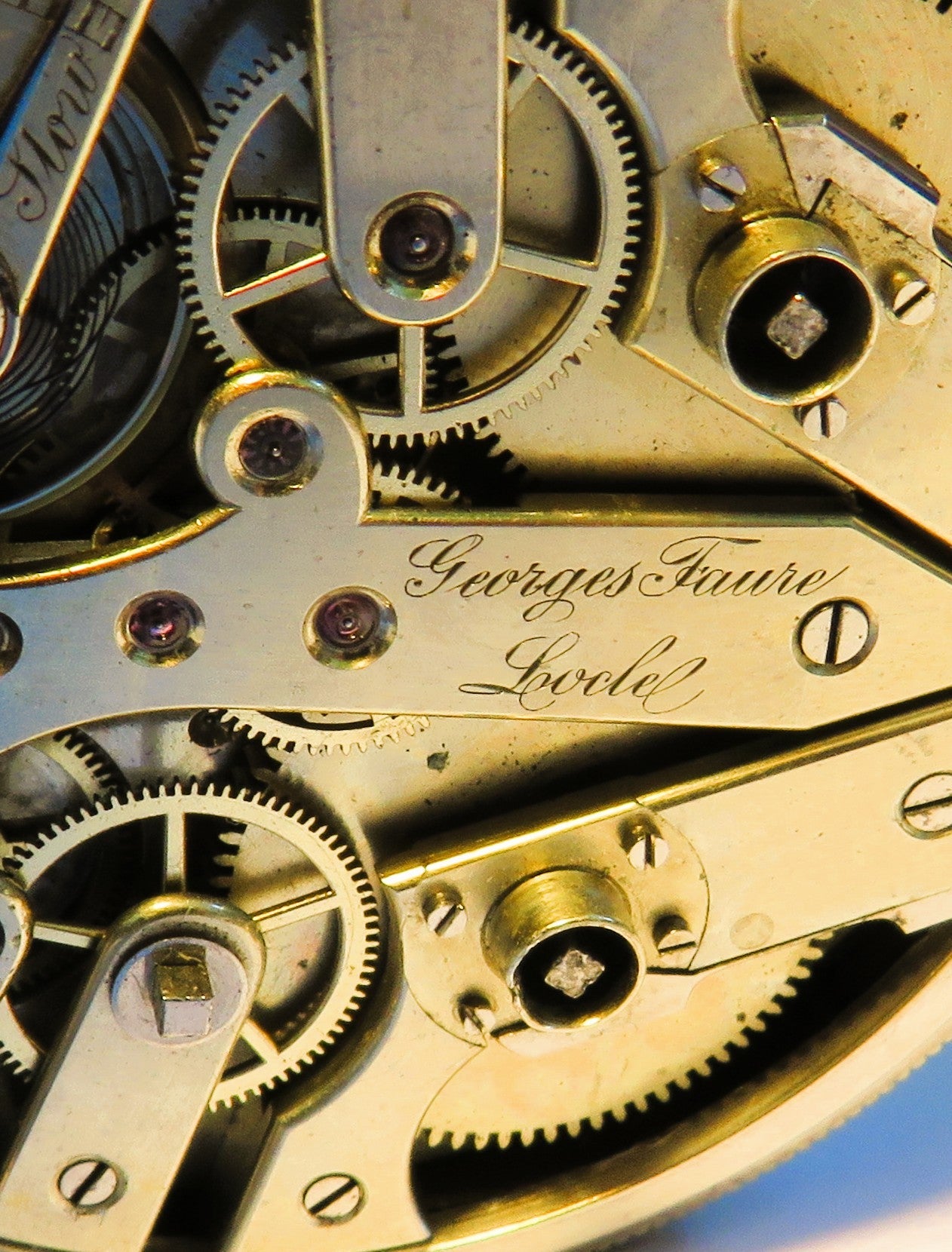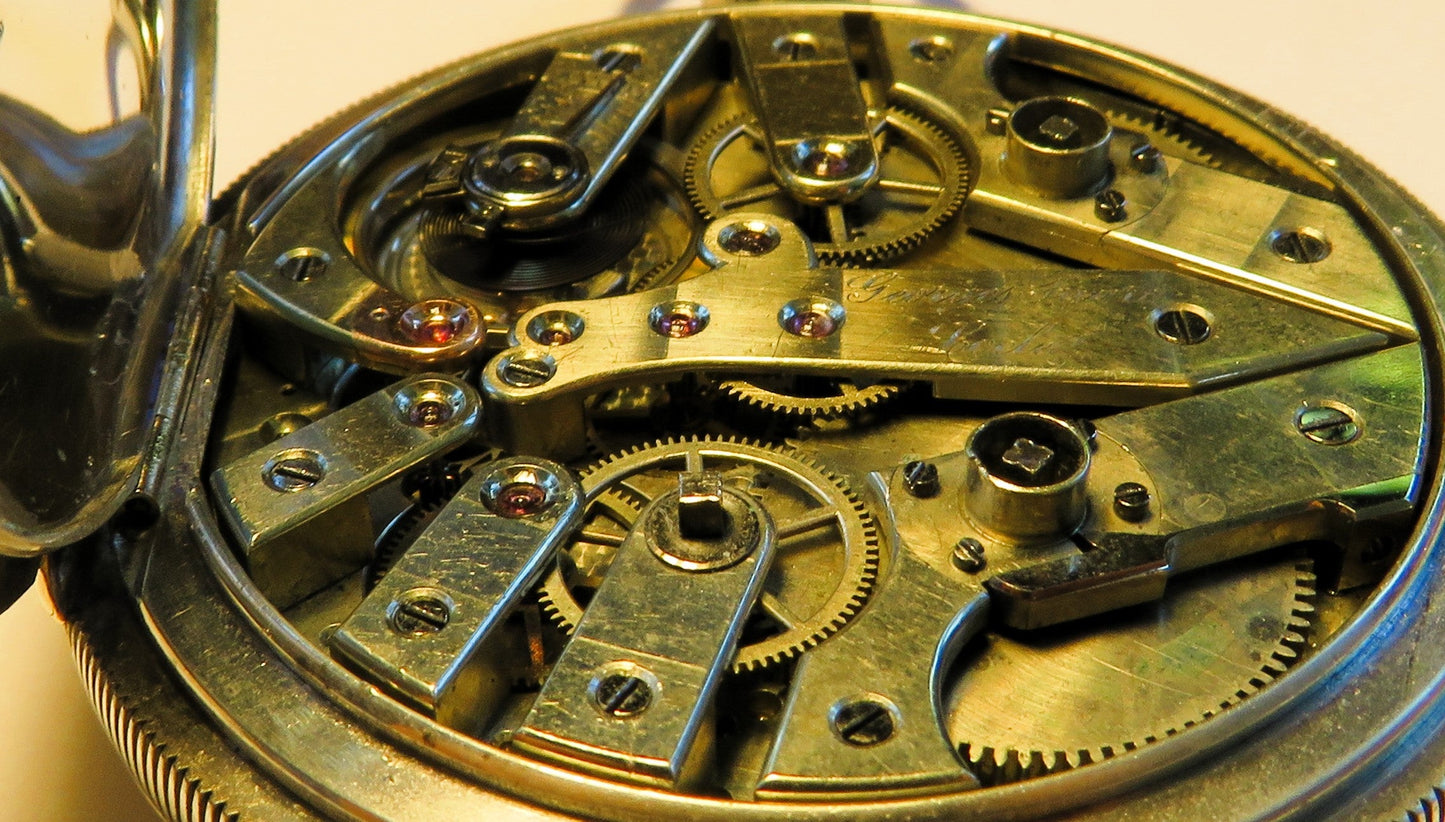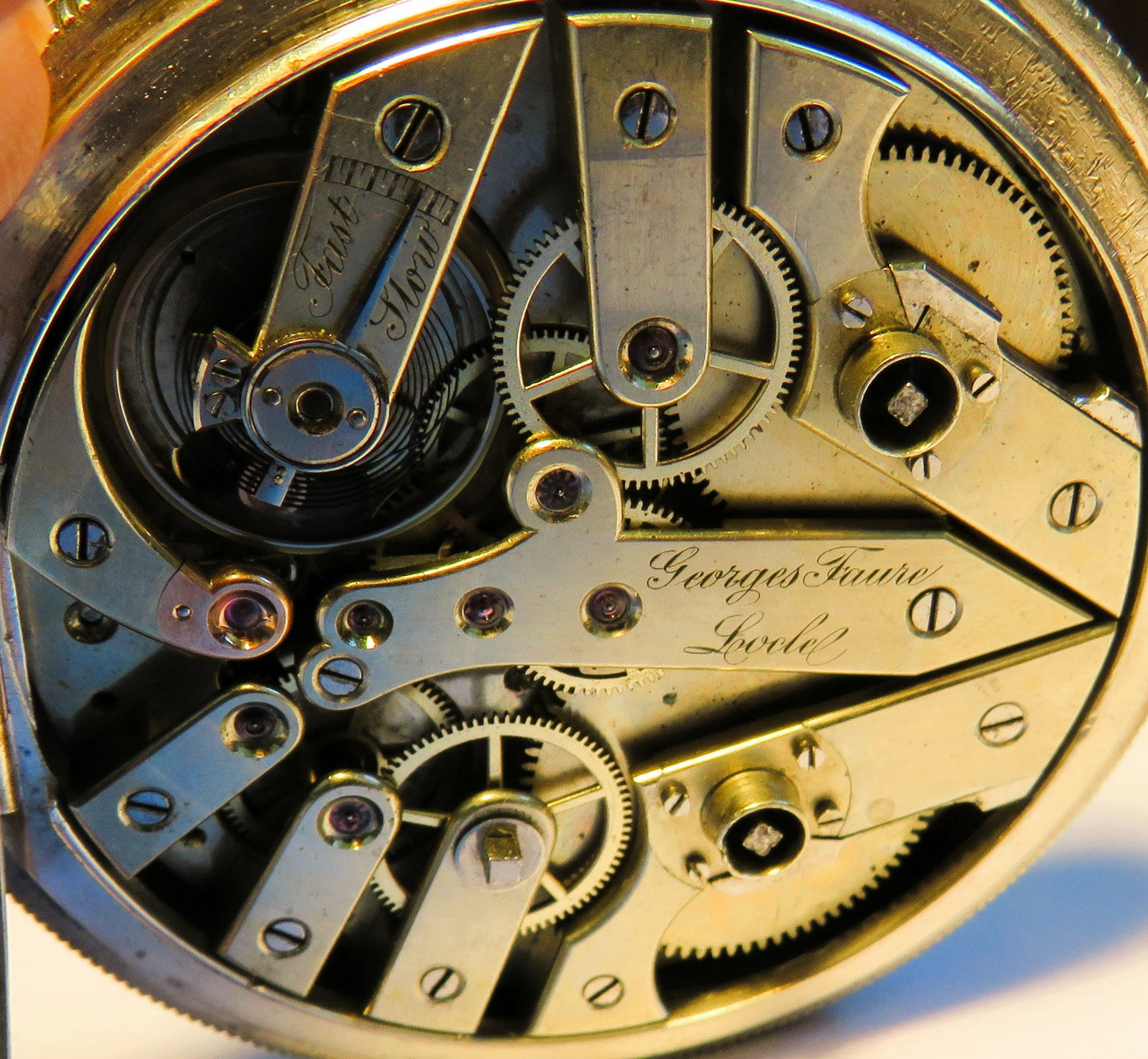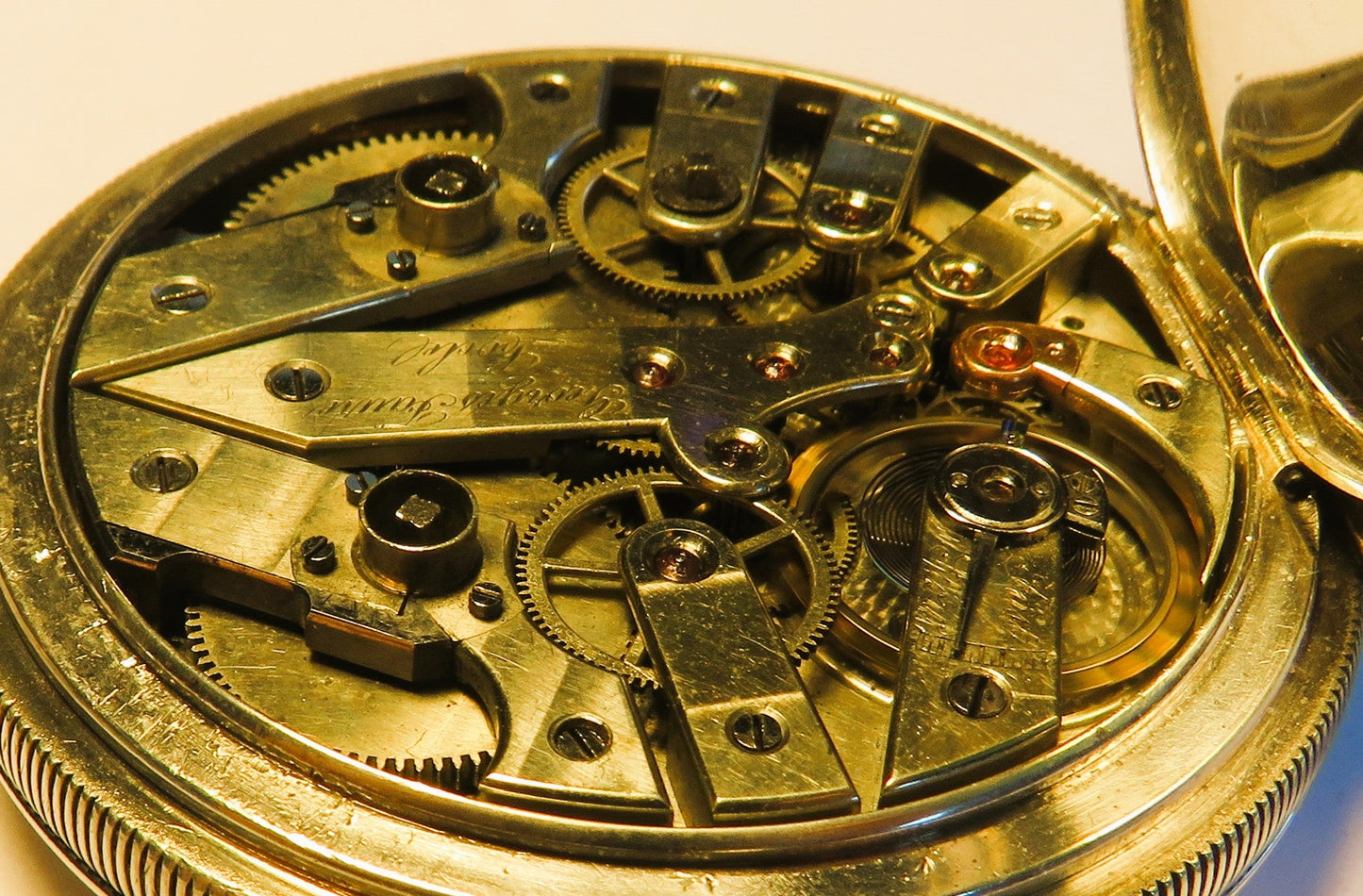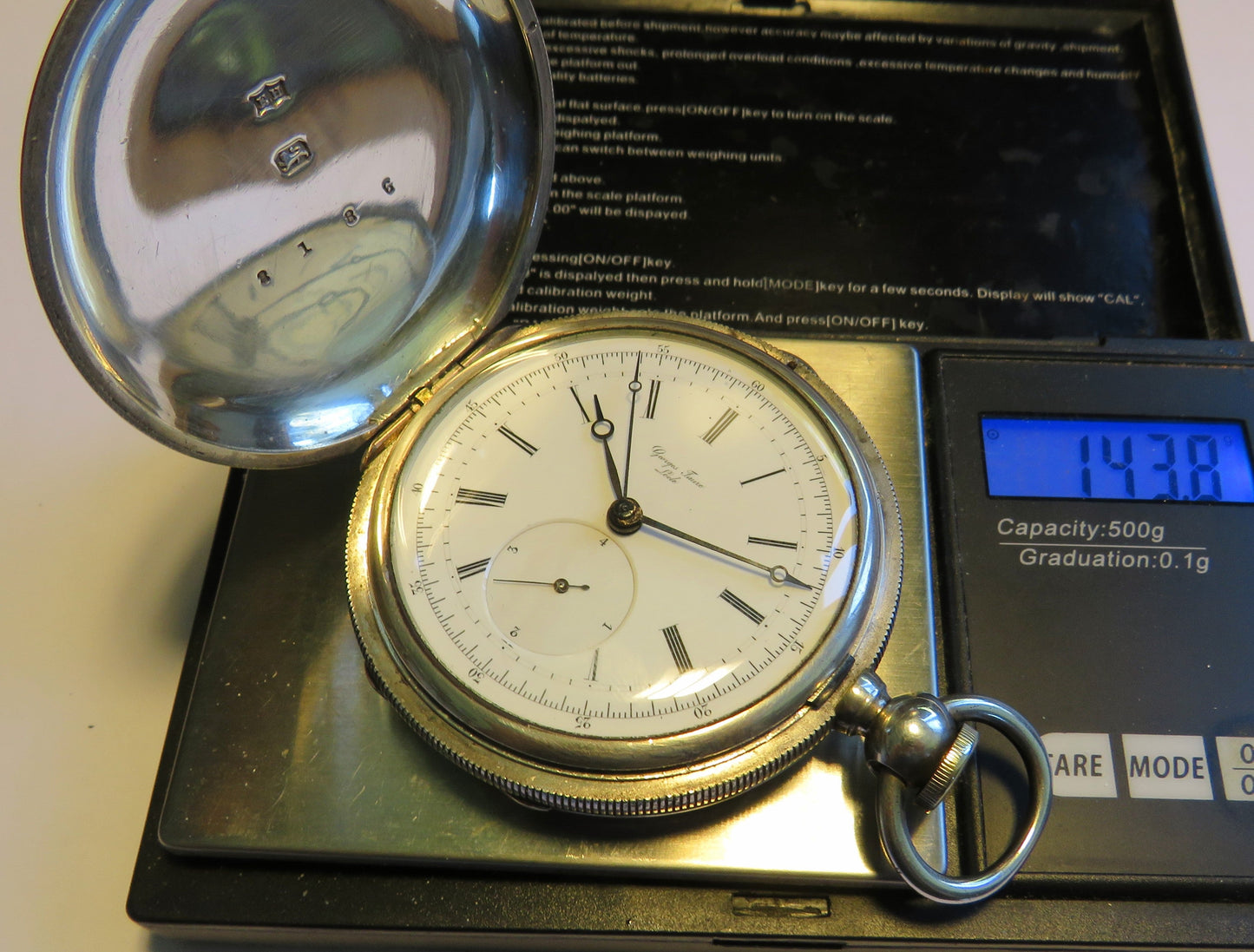Sammler-Uhren
A unique Georges Favre TU Seconde Morte Diablotine Foudroyante
A unique Georges Favre TU Seconde Morte Diablotine Foudroyante
Couldn't load pickup availability
A unique, museum-quality Georges Favre le Locle silver men's TU with Seconde Morte and Diablotine / Foudroyante, a watch of which there are probably less than 100 pieces left in the world
One thing in advance: with the super rare mechanical complications "Seconde Morte" and "Diablotine / Foudroyante", this watch technically plays in an absolute super league, in the absolute top per mille of what is possible and has ever been done in a mechanical movement, absolutely equal to, if not superior to, a mechanical perpetual calendar
Compared to a watch with Seconde Morte and Diablotine / Foudroyante, a repeater or tourbillon complication is like a set of winter tires or a trailer hitch for the car
Seconde Morte ("dead second") means that the watch has two barrels, one for the movement and one for the "jumping second", which are wound separately and connected with complicated couplings.
The visible "Seconde Morte" is a central second hand, which does not have a split-second function, but jumps from second to second, i.e. is dead and does not move until the next "jump"
The central second hand is synchronized with the movement via complicated couplings, but is started, stopped, and set to "12" independently, thus forming a kind of chronograph.
The "Sekonde Morte" function allows the measurement / stopping of short time histories independently of the time display
A unique, spectacular and museum-worthy artifact is the combination of a "Seconde Morte" with a "Diablotine" or "Foudroyante" ("flashing second")
A sub-dial with a 60-second display above the "6" is called an "indirect second"; it runs "indirectly" without any particular accuracy and makes one revolution in 60 seconds.
A diablotine or "foudroyante" is also located above the "6" on a sub-dial and indicates the second
Again with highly complicated couplings, it makes a complete revolution in a single second in 4 or 8 steps (per second!!!)
The combination "Seconde Morte" and "Diablotine / Foudroyante" can therefore not only display and "stop" seconds, but also quarter or eighth of a second on the sub-dial.
Even the layman can roughly imagine the ingenious and precise mechanical effort required to rotate and let a miniature hand rotate precisely once per second, while managing the enormous energy expenditure and the wear and tear of all parts and couplings caused by the speed.
Only very, very few watchmakers or manufacturers in watch history have been able to create such a complication. I've been attending watch auctions all over the world for 30 years, sometimes several times a week.
Only once have I seen a pocket watch with Seconde Morte and Foudroyante at auction, it was from Patek Philippe and was knocked down for over 400,000 dollars
Georges Favre in Le Locle was one of the most important watchmakers of his time and obviously one of the handful of brilliant watchmakers who were ever able to build this unique complication
I am sure that there are not 100 pocket watches with Seconde Morte and Foudroyante left in the world today
Description:
Case diameter: 56mm, weight approx. 143g, silver
Savonnette, gold hinges, case maker's mark "EH", case number 8186
Highly complicated and unique lever movement signed "Georges Favre" with two barrels for the independent, stop-and-jump second "Seconde Morte", plus the "Diablotine / Foudroyante" complication with "flashing" quarter seconds
Bridges with fine stripe decoration, signed Georges Favre Locle, escape wheel and pallet with gold chatons, compensation balance with blued Breguet hairspring, fine adjustment
Fine white, signed enamel dial with Roman numerals and a quarter-second subdials, also signed Georges Favre Locle. Blued Breguet hands.
In 1865, Georges Emile Favre-Bulle-Jacot founded the "Fabrique des Billodes" in Le Locle on a property called Billodes. He initially manufactured precision pocket watches signed with his name.
Around 1900, the product range was expanded. Onboard chronometers, table clocks, precision pendulum clocks, and later also marine chronometers were manufactured.
From 1903 onwards, the Favre-Jacots company regularly and very successfully participated in the Neuchâtel Observatory competitions with pocket watches and onboard chronometers. With the company's transformation into a public limited company in 1911, the Zenith brand was born.
The unique, museum-worthy artifact starts and runs (accuracy not tested), Foudroyante / Diablotine work
EZ 2: normal signs of age or wear, glass good, movement spotless, dial unrestored in good condition, spring cover spring is a bit tired
History of the precision watch manufacturer Georges Favre in Le Locle (Source: Watch Wiki):
Favre-Jacot, Georges
Swiss watch manufacturer
Georges Emile Favre-Bulle-Jacot was born on December 12 , 1843 , in Le Locle and baptized on January 27 , 1844. He was the son of Jules Louis Favre-Bulle and Albertine Matthey de l'Endroit. He was a grandchild of David Louis Favre-Bulle, the brother of Frédéric Louis Favre-Bulle and Ami Louis Favre-Bulle . He was the brother of Louis Arthur Favre-Bulle . His sister, Laure Emma Favre-Bulle, also became a watchmaker.
In 1865, Georges Emile Favre-Bulle-Jacot founded the " Fabrique des Billodes " in Le Locle on a property called Billodes. He initially manufactured precision pocket watches signed with his name. Around 1900 , the product range was expanded.
Board chronometers , table clocks , precision pendulum clocks and later also marine chronometers were produced. From 1903 onwards, the Favre-Jacots company Pocket watches and on-board chronometers regularly and very successfully participate in the competitions of the Neuchâtel Observatory .
With the company's transformation into a public limited company in 1911 , the Zenith brand was born. In the same year, Favre-Jacot stepped down and handed over the management of the company to his nephew , James Favre . Although the premises of the old factory have been replaced by a more modern building, a plaque at the entrance commemorates Georges Favre-Jacot, who was buried there at his own request.
Georges Emile married the watchmaker Louise Philippine Jacot-Descombes on January 2, 1863 , in Le Locle. Five girls and one boy were born to this marriage. Records in Le Pont-de-Martel mention only three children from the marriage: Berthe-Alice, Rose-Julia, and Fernande-Amélie; perhaps two births are recorded in another location.
Georges Emile Favre-(Bulle) Jacot died on May 19, 1917 in Le Locle, aged 73.
